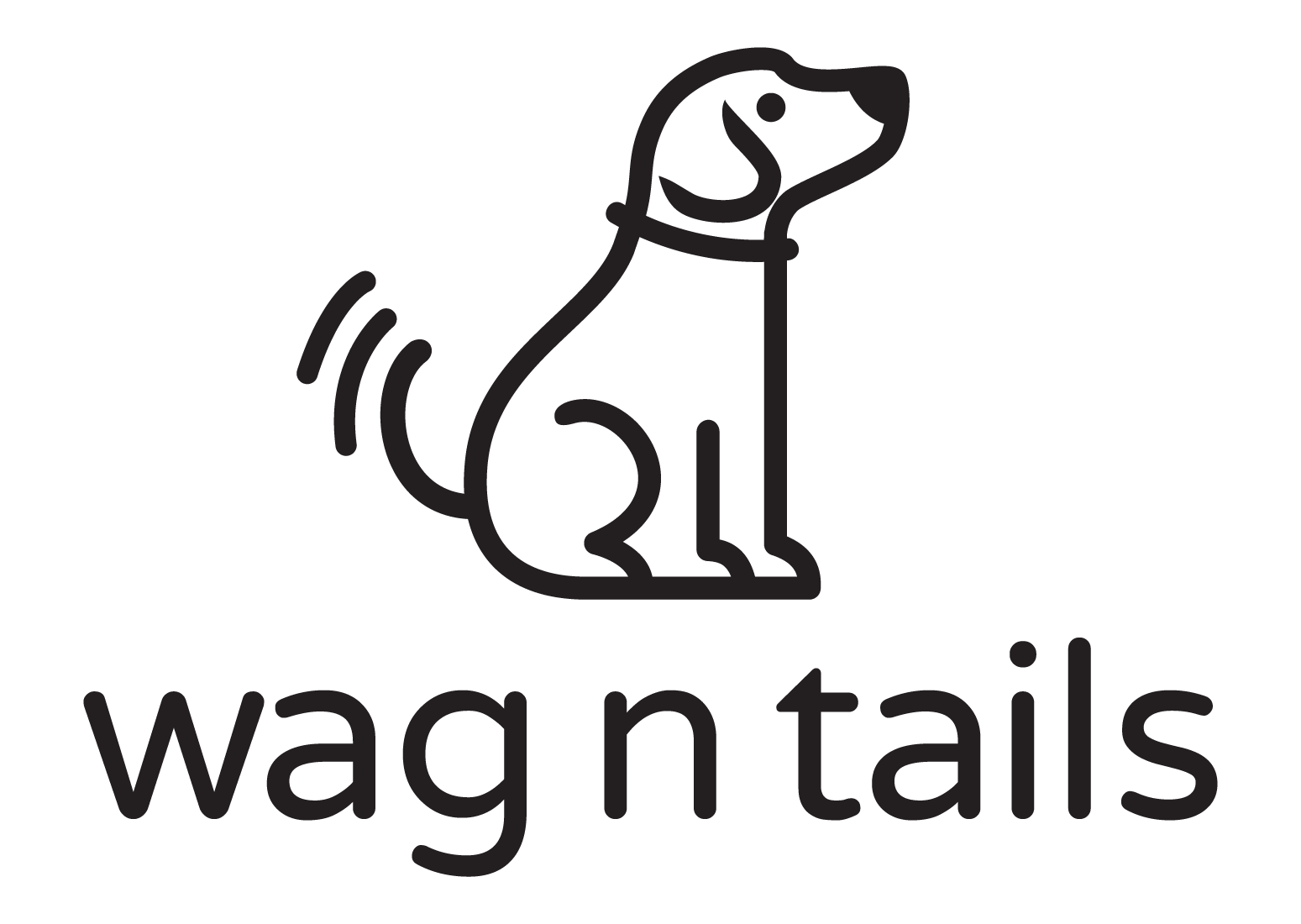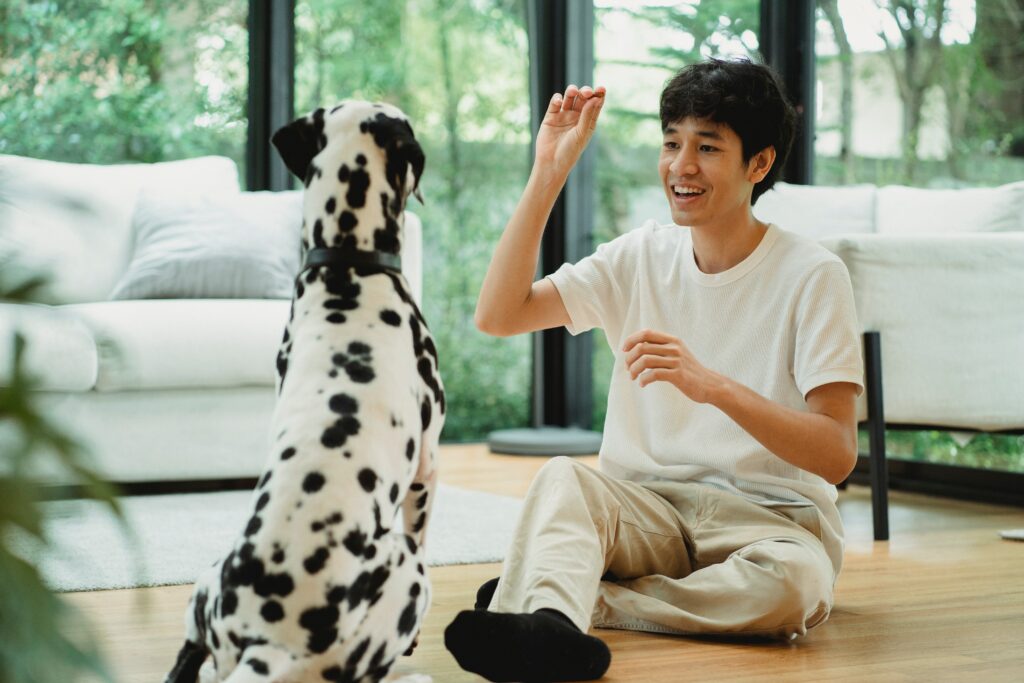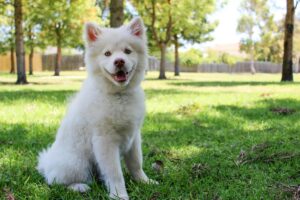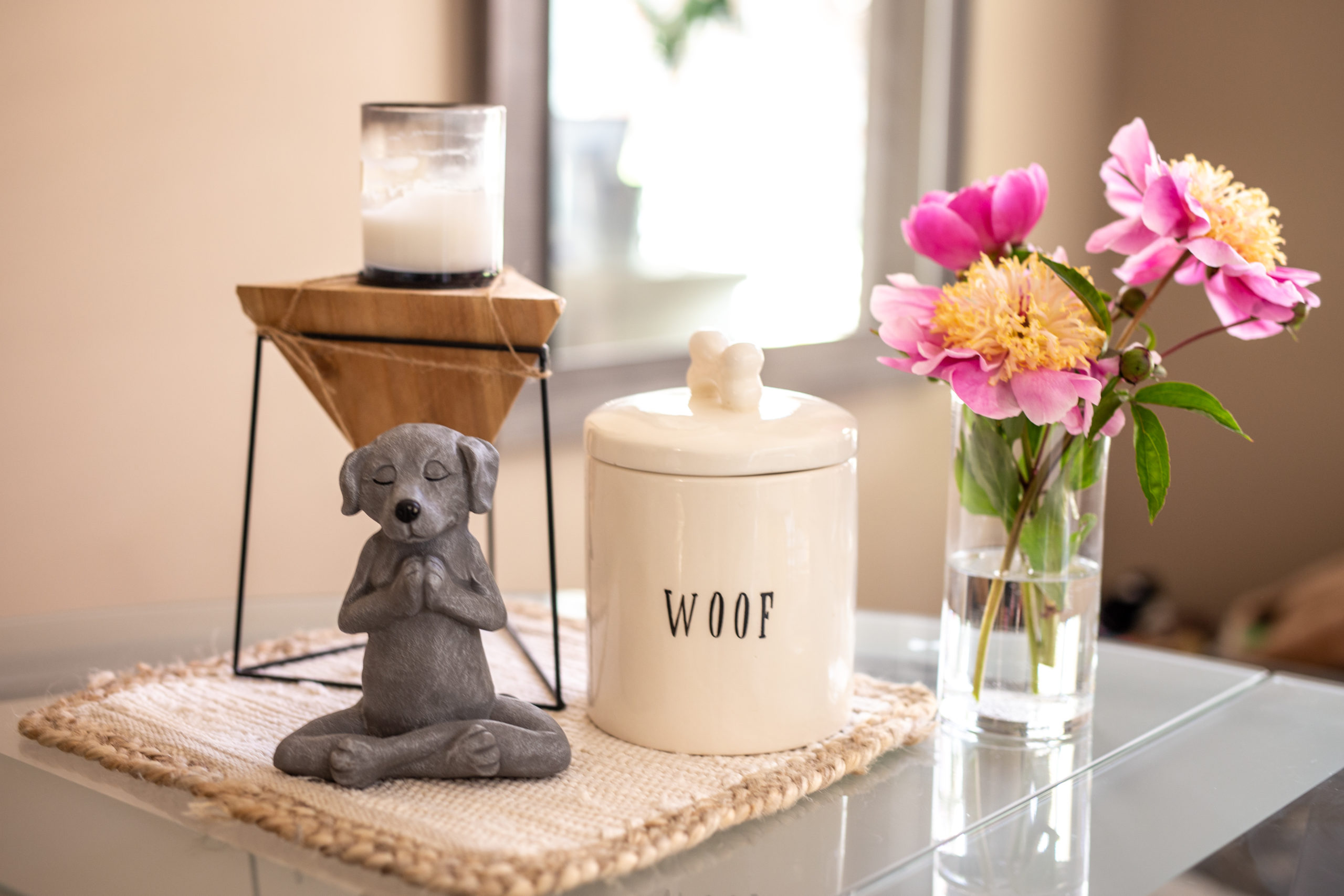How to Train Your Dog to Stay Calm with Place Training
Training your dog to stay calm in exciting situations can be as challenging as getting a high-energy toddler to sit quietly. However, it’s a valuable skill to teach your dog, and it’s achievable through Place Training. In this guide, we’ll explore how to train your dog to stay calm and focused, and we’ll provide you with step-by-step instructions on how to use Place Training effectively. If you want to know how to train your dog to stay calm, read on!
When it comes to training your dog on how to stay calm, one of the most valuable techniques is Place Training. This method allows you to designate specific areas for your dog’s calm and composed behavior, and it can be customized to suit various situations and locations. Let’s delve into some examples of cues you can use for Place Training:
- “Settle” or “Relax”: Ideal for the family room, encouraging calm behavior during family time next to the television.
- “There!”: Use this cue for the mat next to the door, ensuring polite and prepared greetings for guests.
- “Place”: Designate a spot on a kitchen rug, away from cooking and eating areas, to keep your dog calm during meal preparation.
- “Mark!”: For advanced training, consider using “Mark” to teach your dog to wait on small discs, creating precise boundaries for specific activities.
- “Chill”: Perfect for outdoor adventures at the beach, outdoor restaurants, trail walks, and parks, helping your dog stay calm in unfamiliar environments.
Why Place Training is Essential
Teaching your dog to go to their safe and favorite place is a valuable lesson to teach. You might want to train your dog to stay calm so you can cook dinner and prevent table begging or investigating the countertops. You could send him to his place when company comes over so he doesn’t jump up on the kids on the couch. Training your dog to stay calm when you’re outside is invaluable! Especially when strangers, dogs, or smells are near.
It can take a little while to train your dog to stay calm and have it be reliable when you add distance and distractions but it’s worth the wait when you get to the finish line on this one!
Using Place Training allows you a transition from prevention training with the crate as you’re moving towards allowing your dog to be off leash or make good choices on their own. Until that time comes, your dog is counting on your guidance.
Dogs don’t grow out of excitement and curiosity, and we dread that time when they do! So embrace your young puppies’ curiosity or your older dog’s exuberance by teaching Place Training. You will be preventing your dog from learning problem behaviors such as jumping, begging, or barking and teaching what’s expected of their behavior instead.
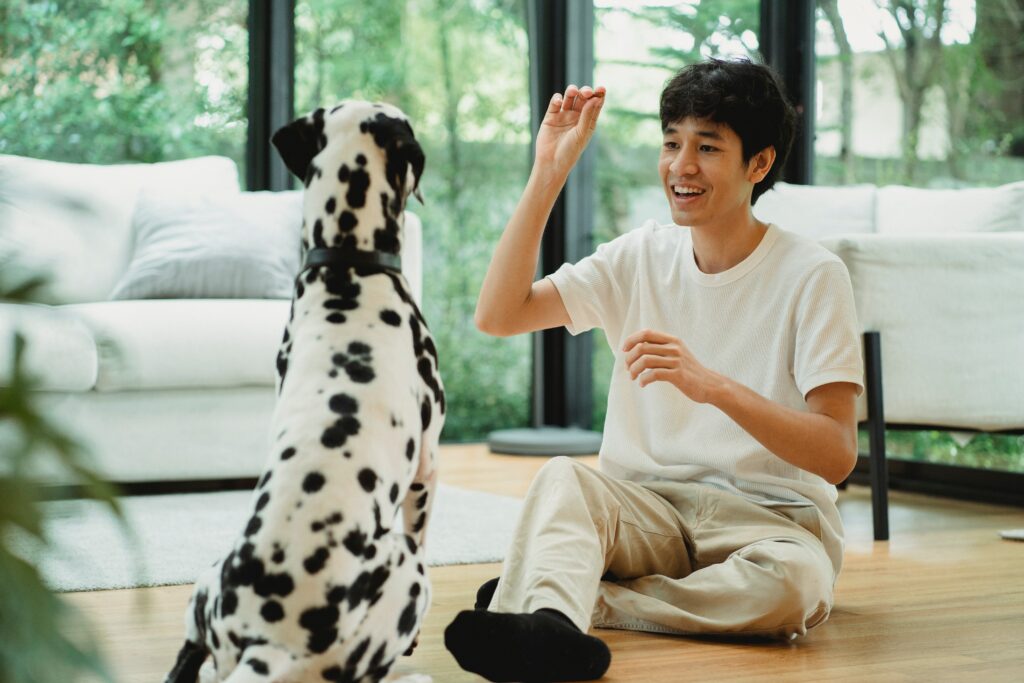
Effective Place Training Techniques
Now, let’s explore some effective techniques to train your dog to stay calm and reinforce Place Training:
- Positive Reinforcement: Introduce your dog to the designated mat, rug, or dog bed, and reward them immediately with a treat when they show interest by looking at or sniffing the designated area.
- Continue to reward all mat-related behaviors, most especially when the dog goes to the place on her own.
- Now use the release word, move a few steps away from the mat, and make sure she follows you so she’s off the mat. When she is off the mat, just stand quietly and ignore her – no talking, touching or food. Most dogs will race back to the mat to prompt you for more treats where that magic mat is!
- When your dog will go to the mat and lie quietly on it go ahead and add your cue. Just starting with the word “Place!” to start is fine! Practice sending your dog to the “Place” from increasingly longer distances, and eventually from anywhere in the house.
Fun Tip: To encourage your dog’s engagement with the mat, move farther away and invite them to follow you. Stand quietly and do not provide cues. Reward generously if they return to the mat, reinforcing the importance of this designated spot for calm behavior.
5. Once you’ve instructed your dog, acknowledged her response with a marker signal, and reward her with a treat for approximately six Downs, mixed in with her other responses, take a momentary pause. During this pause, observe if your dog voluntarily chooses to perform a Down without receiving a marker for any other behavior. If your dog does, it’s time to celebrate with enthusiasm! Immediately mark the moment and offer your dog several high-value treats – a jackpot of rewards! However, if your dog doesn’t initiate a Down on its own, return to marking any other on-the-mat behaviors, occasionally including spontaneous Downs. For these other behaviors, use treats of medium value. Save the high-value treats exclusively for when your dog performs a Down.
In this phase, we are encouraging your dog to take the initiative and demonstrate the desired behavior independently.
Repeat steps 4 and 5 until your dog begins offering downs during your pauses. Your dog is learning that any on-the-mat behavior is rewardable, but downs get the better rewards. Your dog should soon begin offering only downs on the mat, even though other behaviors will still be getting medium rewards.
Place Training Troubleshooting & Evolution
If at any time your dog gets off the mat before you give your release cue, pick up the mat and ignore her for a minute, then place the mat down and try again. If she gets up several times in a row, you have increased duration too quickly – go back to a shorter duration and work your way up again.
Finally, you need to add distractions and generalize the behavior. Practice sending your dog to her mat in the face of kindergarten-level distractions – jump once, jump twice, clap your hands…. Gradually work up to college level, where you can send her to her mat even with kids running through the house or while food is being prepared in the kitchen.
By following these steps and remaining consistent in your training, you can successfully teach your dog to stay calm through Place Training, whether at home or in various outdoor settings. Remember, patience and positive reinforcement are key to achieving the desired behavior.
For tips on increasing the duration of the “stay” behavior, see “Stay Happy,” WDJ November 2012.
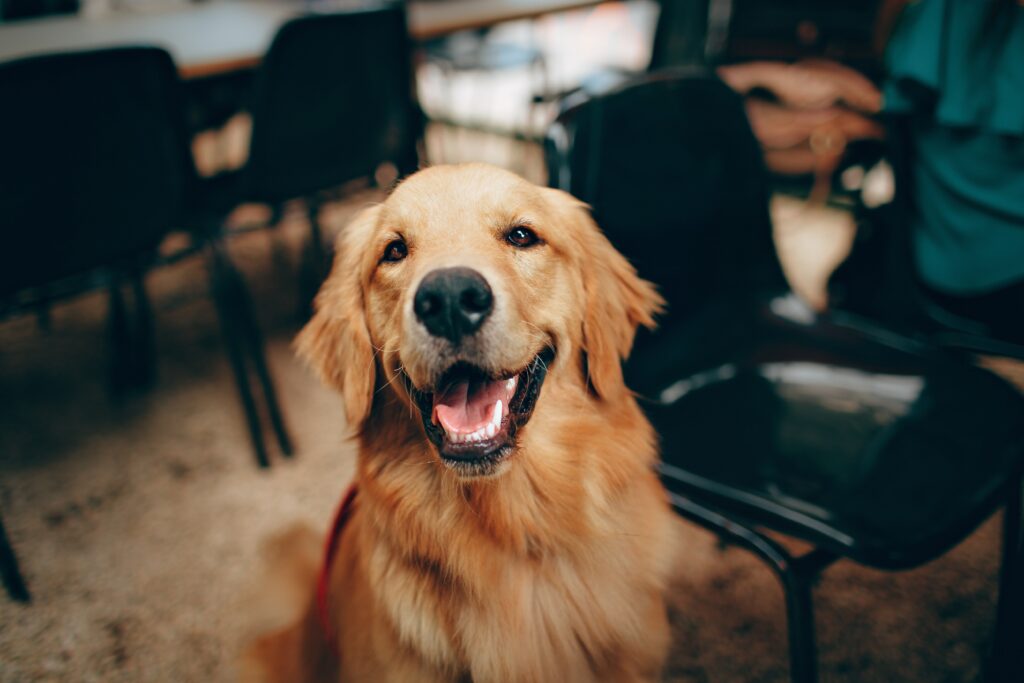
Train Your Dog With Wag N Tails
As a dog owner, you may encounter moments when your patience is put to the test. From disobedience to couch destruction and shoe-chewing, these common behavioral issues can be challenging. However, the good news is that almost all dog-related problems are both preventable and treatable. What’s even better? There’s a way to address these issues that’s not only effective but also enjoyable for both you and your furry friend! At Wag, we specialize in teaching you how to manage these common behavioral challenges while fostering a strong and lasting bond with your dog.
Learn more here
